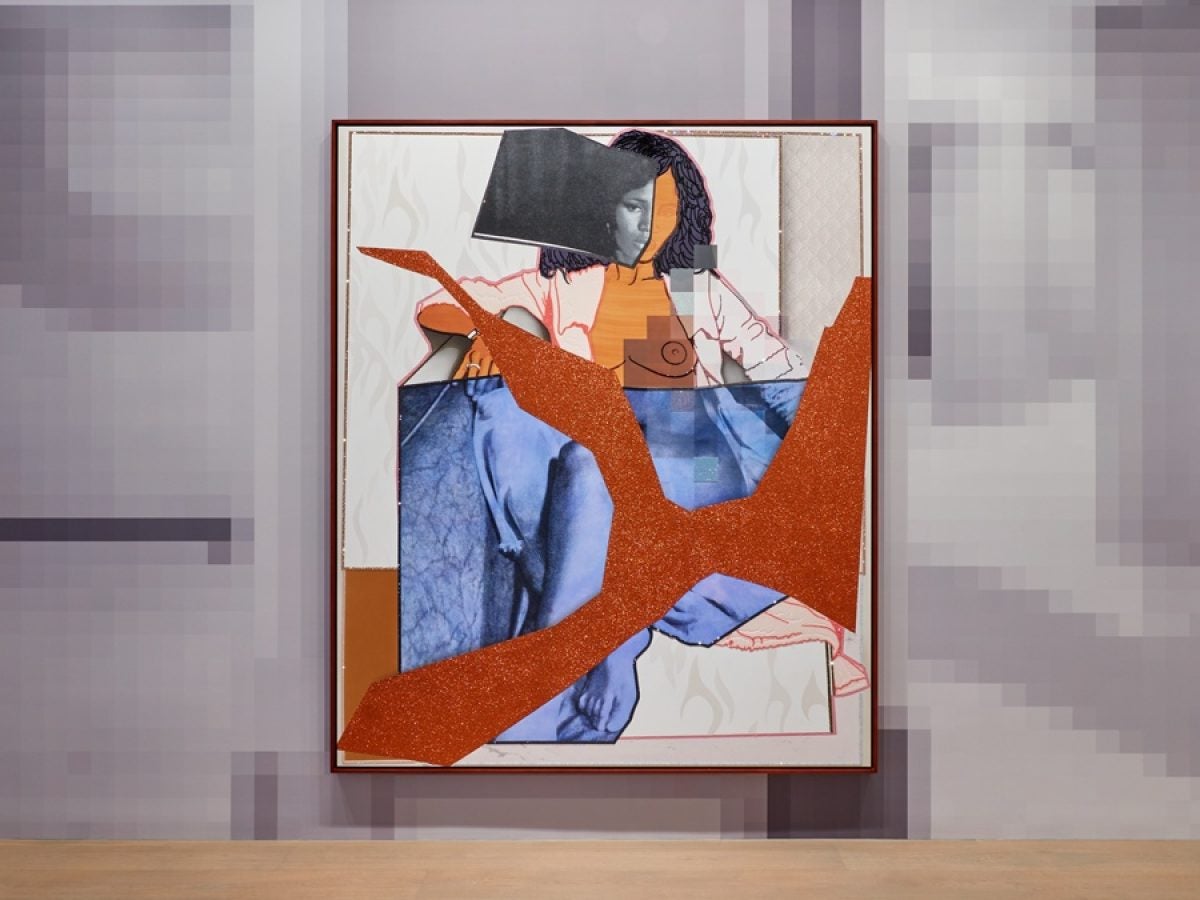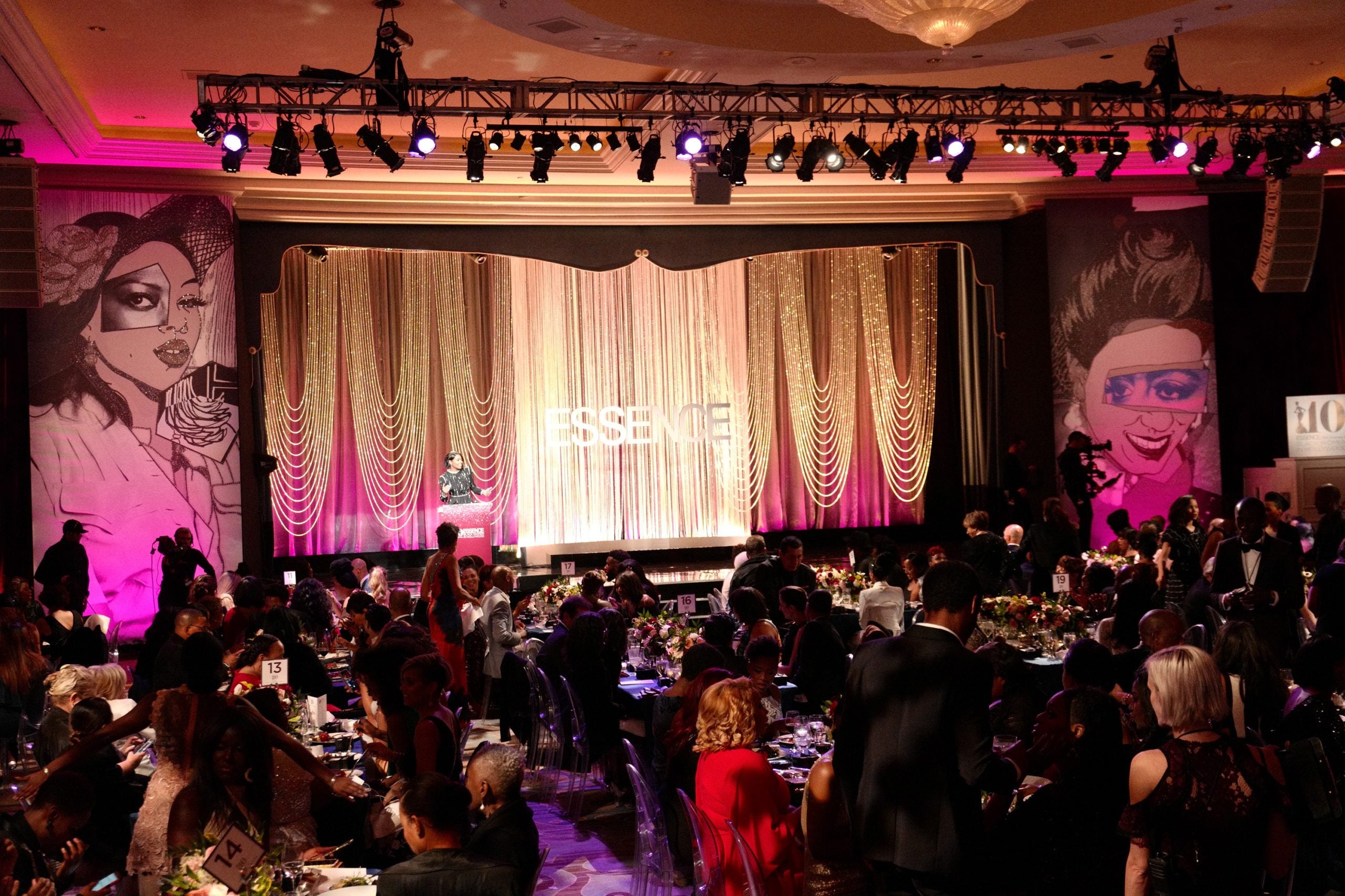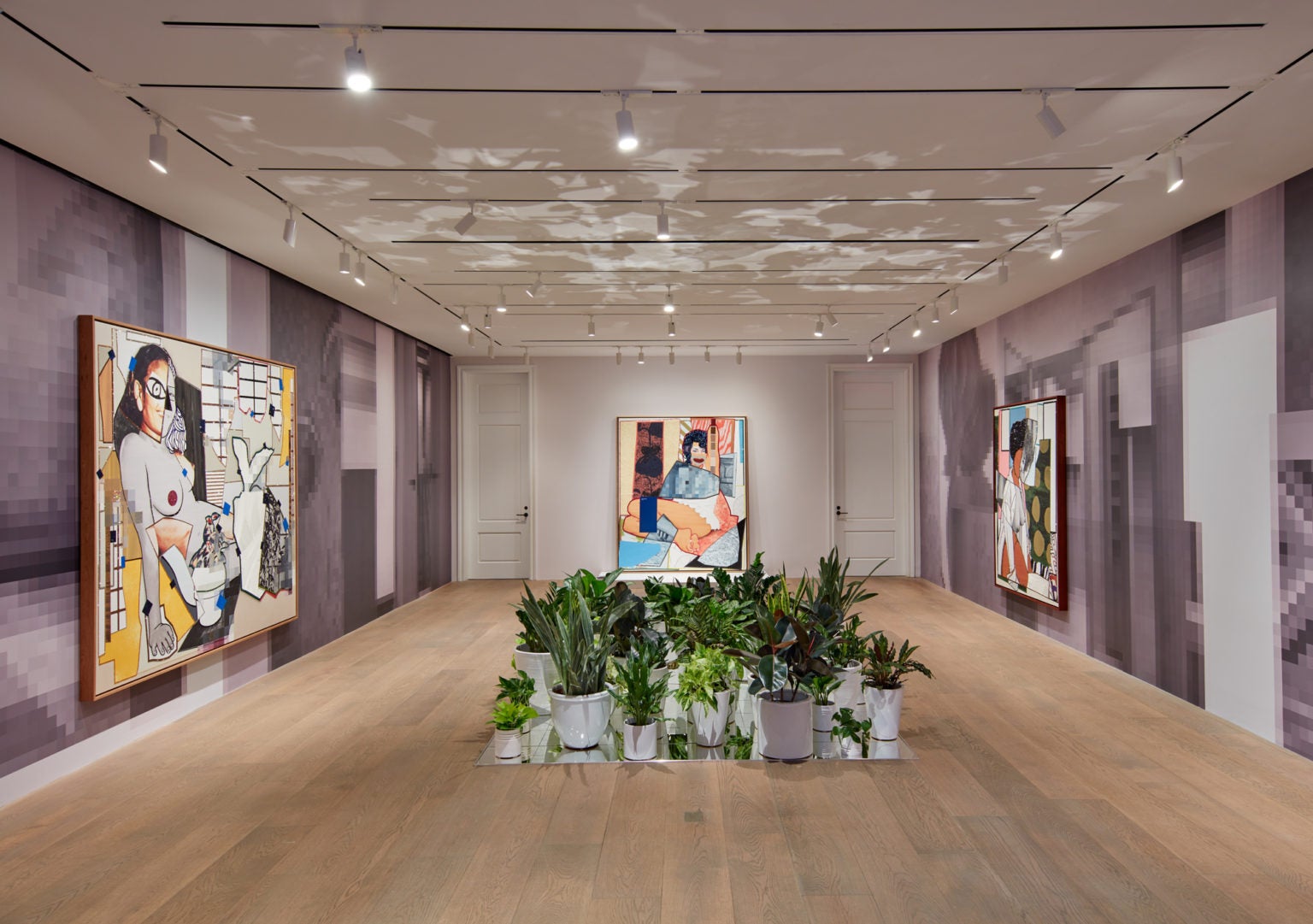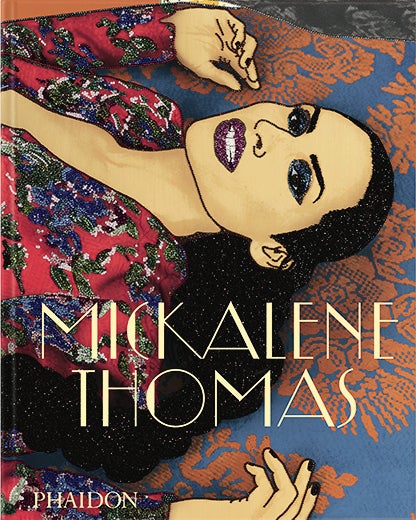
When ESSENCE producers were in the early stages of planning the 2017 Black Women in Hollywood awards—its 10th anniversary—the team wanted to elevate the messaging of the event by highlighting how Black women were celebrated in germane, unapologetic narratives beyond entertainment. Enter visual artist Mickalene Thomas.
“Mickalene uses a multitude of mediums showcasing the strength and vulnerability of Black women through textiles, photo montages and glitter,” says ESSENCE’s senior creative director, Ally Brown, who selected works from Thomas’s archives to be featured as majestic panels on the stage of the black-tie affair.

Starting this fall, more of those archival pieces will be on display in Thomas’s latest exhibition, “Beyond the Pleasure Principle,” which will be on view at Lévy Gorvy galleries in New York, London, Paris, Hong Kong and at Galerie Nathalie Obadia, Paris from now until Nov. 13.
At the New York opening, Thomas said of her current exhibit: “In 2017, I started making some collages related to these Jet beauties of the week. But I felt a little removed because I’m used to—as you all know my body of work—photographing models, creating installations. That part of my practice and process is really a way of understanding the environmental, the elasticity, allowing the sitter and model to activate the space in a collaborative way. That way, when I’m photographing them, there’s this essence that comes through the image. I was very excited about that. Excited about that relationship with a core of working with women I knew and having them exude themselves, personify themselves in these different characters. And representing the women in my life I wanted to celebrate and who I loved and adored and who I didn’t see in print ads. I hoped that they would create some impact and inspire other people, or every day women or young girls that could go see these images in museums or the galleries.”

Thomas continued: “Then fast forward, I had a show and then COVID happened. I began thinking about how as an artist, you have to utilize your resources when there are limitations. I was no longer in a situation where I was photographing my friends or my lovers. And my mother wasn’t here. I began to really think about these women and how I could present them and provide a narrative of agency representation in how I see them. And so while I was taking the calendar images and sourcing them through my process of collaging them and working with them, they became these monumental figures. They became alive for me. They were no longer anonymous. They became these heroines for me of dealing with desire, pleasure, and also more importantly, thinking about Black lives. Through the last in my work during COVID, I really was dealing with Black erotica. And so burning those images in a way that allows Black women their own agency with their sexuality. And it has nothing to do with the stereotype. It’s Black erotica and what that really means.”
The global retrospective, the first of this size for the artist, coincides with another significant marker in Thomas’s nearly 25-year career. Phaidon Press is publishing the first comprehensive monograph of her paintings, portraitures, photography and photographic collage. The 288-page retrospective includes essays by acclaimed author Roxane Gay, renowned German-American painter Hans Hofmann and Professor of Modern Art at Columbia University Kellie Jones, who would deeply influence Thomas’s artistic journey when Jones taught her in a performance art class.

The New York–based artist has long centered Black women’s bodies in vivid acrylic paintings embellished with rhinestones and Blaxploitation-inspired photography (a reverent nod to her 1970s childhood). Her art is an explicit commentary on race, gender and sexuality, and her works adorn private and permanent collections, including the Museum of Modern Art in New York City, and the National Portrait Gallery in Washington, D.C., where Thomas’s 2008 portrait of former first lady Michelle Obama is housed. On her collective artistry: “Collage is a huge part of my work. It’s one of the cores of creativity where you can take various components from different resources our sources and you can try to make sense out of the art or create a narrative,” said Thomas.
Of her creations, fellow contemporary artist Kerry James Marshall has said, “A room full of Thomas’s paintings are viscerally exhilarating. High-impact color, clashing and overlapping patterns, rhinestones and glitter…produce an effect that is nothing short of sensational.” We couldn’t agree more.





